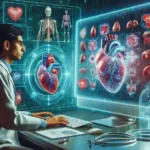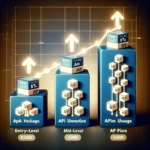In today’s digital landscape, where attention spans are shorter than ever, mastering the art of fast-paced video cuts has become essential for content creators, filmmakers, and video editors. These dynamic editing techniques can transform ordinary footage into compelling visual narratives that keep viewers engaged from start to finish.
Understanding the Psychology Behind Fast-Paced Editing
Fast-paced video cuts work on a psychological level by creating a sense of urgency and excitement. When implemented correctly, they can elevate the emotional impact of your content and maintain viewer attention throughout the entire video. The human brain is naturally drawn to movement and change, making rapid cuts an effective tool for capturing and holding interest.
Professional editors understand that the key lies not just in speed, but in purposeful rhythm. Each cut should serve a specific function, whether it’s building tension, conveying information quickly, or creating an emotional response. The most successful fast-paced edits feel natural and seamless, despite their complexity.
Essential Techniques for Effective Fast-Paced Cuts
Match Cuts and Motion Continuity
One of the fundamental techniques in fast-paced editing is the match cut, where elements from one shot are matched with similar elements in the next. This creates visual continuity even when cutting rapidly between different scenes or angles. Motion continuity ensures that movement flows naturally from one cut to the next, preventing jarring transitions that could disrupt the viewing experience.
When working with action sequences, consider the direction of movement and ensure that objects or characters maintain consistent directional flow. This technique is particularly effective in sports videos, action films, and music videos where maintaining energy is crucial.
Rhythm and Beat Synchronization
Successful fast-paced editing often follows a musical rhythm, even in videos without prominent soundtracks. Establishing a consistent beat helps viewers anticipate cuts and creates a more engaging viewing experience. This technique involves cutting on specific beats or creating a pattern that viewers can subconsciously follow.
Many professional editors use audio waveforms as visual guides, cutting precisely on drum beats, musical accents, or even ambient sound peaks. This synchronization creates a hypnotic quality that draws viewers deeper into the content.
Strategic Use of Jump Cuts
While traditionally considered a editing mistake, jump cuts have evolved into a powerful tool for fast-paced content. When used strategically, they can compress time, eliminate unnecessary pauses, and maintain viewer engagement. Modern content creators particularly favor this technique for tutorials, vlogs, and social media content.
The key to effective jump cuts is ensuring they serve a purpose beyond simply speeding up content. They should enhance the narrative flow and maintain visual interest while preserving the essential information.
Advanced Cutting Techniques for Professional Results
L-Cuts and J-Cuts for Seamless Transitions
L-cuts and J-cuts are sophisticated techniques that allow audio and video to transition at different times, creating more natural and engaging sequences. In fast-paced editing, these cuts help maintain conversational flow while allowing for rapid visual changes. L-cuts extend audio from the previous shot while showing new video, while J-cuts introduce audio before the corresponding video appears.
These techniques are particularly valuable when editing interviews, dialogue scenes, or any content where maintaining natural speech patterns is important while incorporating dynamic visual elements.
Cutaway Shots and Insert Editing
Incorporating cutaway shots and inserts provides visual relief and additional context without slowing down the overall pace. These shots can show reactions, details, or related imagery that supports the main narrative. When editing fast-paced content, strategic cutaways prevent viewer fatigue while maintaining momentum.
Professional editors often prepare extensive libraries of cutaway footage specifically for this purpose, ensuring they have appropriate material to maintain visual interest throughout rapid sequences.
Technical Considerations for Fast-Paced Editing
Frame Rate and Shutter Speed Optimization
The technical foundation of effective fast-paced cuts begins with proper camera settings. Higher frame rates provide more flexibility in post-production, allowing editors to create smooth slow-motion effects or select the perfect frame for cuts. Proper shutter speed settings ensure that motion blur appears natural and doesn’t create distracting artifacts during rapid cuts.
Understanding the relationship between frame rate, shutter speed, and final output format is crucial for maintaining professional quality throughout the editing process.
Color Correction and Visual Consistency
Fast-paced cuts can be jarring if there are significant color or exposure differences between shots. Implementing consistent color grading and exposure correction across all clips creates visual harmony that allows viewers to focus on content rather than technical inconsistencies. Professional colorists often establish look-up tables (LUTs) specifically for maintaining consistency in rapidly cut sequences.
Software Tools and Workflow Optimization
Keyboard Shortcuts and Efficiency
Mastering keyboard shortcuts and developing efficient workflows is essential for creating fast-paced cuts effectively. Professional editors rely heavily on customized shortcut configurations that allow them to make cuts, apply effects, and navigate timelines without interrupting their creative flow. Workflow optimization can significantly reduce editing time while improving precision.
Many successful editors create custom workspace layouts specifically for different types of fast-paced projects, ensuring that all necessary tools are readily accessible.
Audio Considerations in Rapid Editing
Audio plays a crucial role in fast-paced video cuts, often serving as the backbone that holds rapid visual changes together. Proper audio editing techniques include seamless crossfades, strategic use of ambient sound, and careful attention to audio levels throughout transitions. Sound design elements can enhance the impact of cuts and create additional rhythm layers.
Common Mistakes and How to Avoid Them
Overuse of Effects and Transitions
One of the most common mistakes in fast-paced editing is relying too heavily on flashy transitions and effects. While these elements can enhance certain moments, overuse can distract from the content and create a amateur appearance. Professional restraint in effect usage often produces more impactful results.
Ignoring Narrative Flow
Fast-paced cuts should never sacrifice story clarity for visual excitement. Each cut should advance the narrative or provide valuable information. Editors must balance speed with comprehension, ensuring that viewers can follow the story despite rapid transitions.
Industry Applications and Future Trends
Fast-paced editing techniques have found applications across various industries, from social media marketing to feature films. As attention spans continue to decrease and platforms favor engaging content, these skills become increasingly valuable. Emerging technologies like artificial intelligence and machine learning are beginning to assist editors in creating more sophisticated fast-paced sequences.
The future of fast-paced editing likely includes more automated tools for rhythm detection, improved motion tracking for seamless cuts, and enhanced collaboration features for team-based projects.
Conclusion
Mastering fast-paced video cuts requires a combination of technical skill, creative vision, and understanding of viewer psychology. By implementing these techniques thoughtfully and practicing regularly, editors can create compelling content that captures and maintains audience attention in our increasingly fast-paced digital world. Remember that the goal is not simply to cut quickly, but to create meaningful, engaging experiences that serve the story and connect with viewers on an emotional level.







